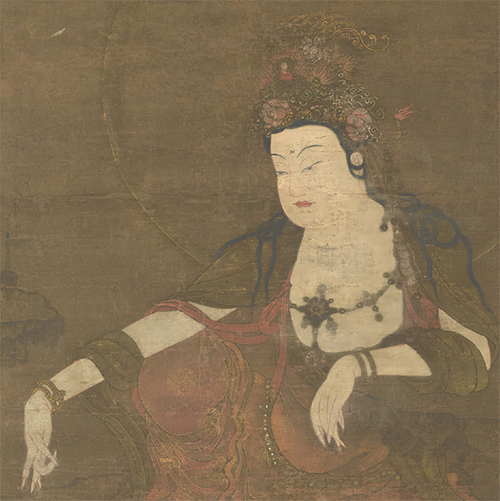True Identity
Reconsidering a Fourteenth-Century Buddhist Painting of the Water-Moon Avalokite´svara in the Rijksmuseum
DOI:
https://doi.org/10.52476/trb.9750Abstract
In the Rijksmuseum collection there is a painting depicting the Buddhist deity Water-Moon Avalokite´svara. The identification and dating of this painting are complex. It had long been considered to be a Chinese work of the Song Dynasty and dated to the twelfth century; later it was regarded as a Chinese work from the Yuan Dynasty and dated to the fourteenth century; more recently opinion shifted and it was seen as a Korean Buddhist painting from the Goryeo Dynasty and dated to the first half of the fourteenth century. This essay aims to serve as a fundamental research by examining the iconography and style of this painting in detail. The author argues on the basis of style that this painting is a late fourteenth-century Japanese hybrid creation that combines both Chinese iconography and the colouring of Chinese Song Buddhist painting with decorative elements of Korean Goryeo Buddhist painting. In light of the recent research into the inter-regional connection of East Asian Buddhist image production, the Rijksmuseum Water-Moon Avalokite´svara
provides an example of the artistic interactions between China, Korea and Japan in the fourteenth century.
Downloads







